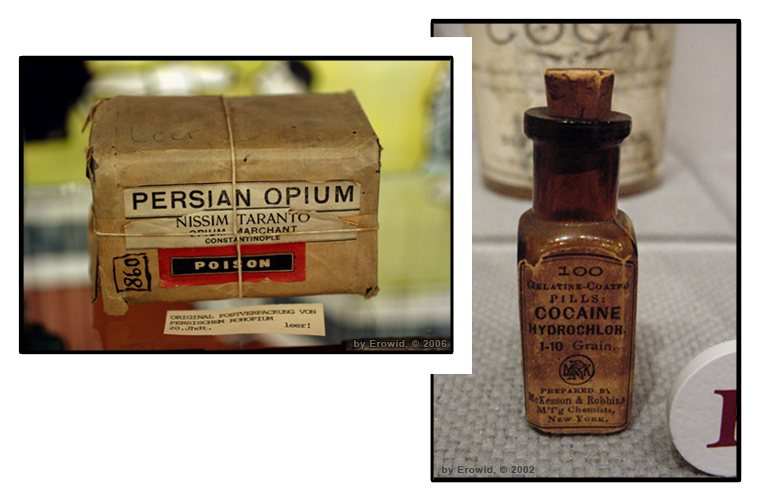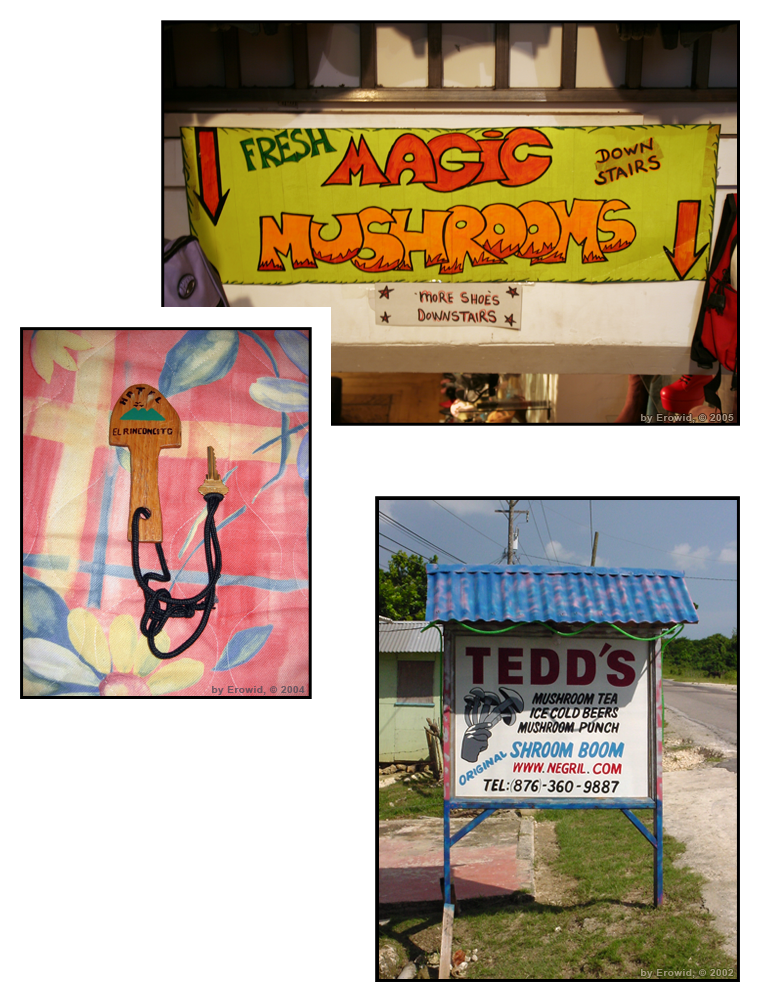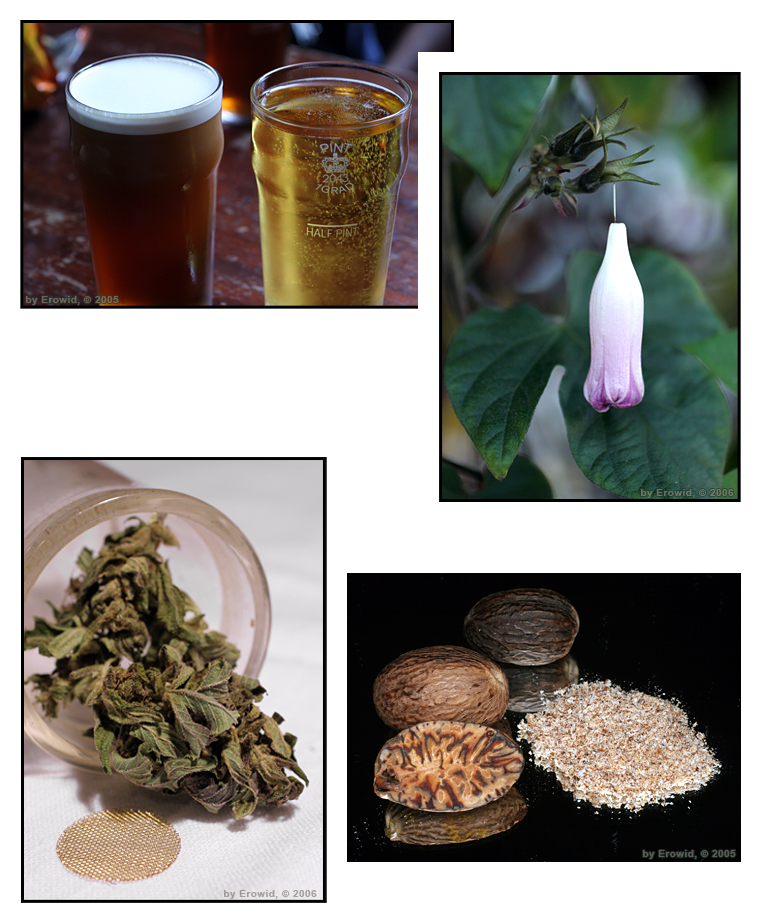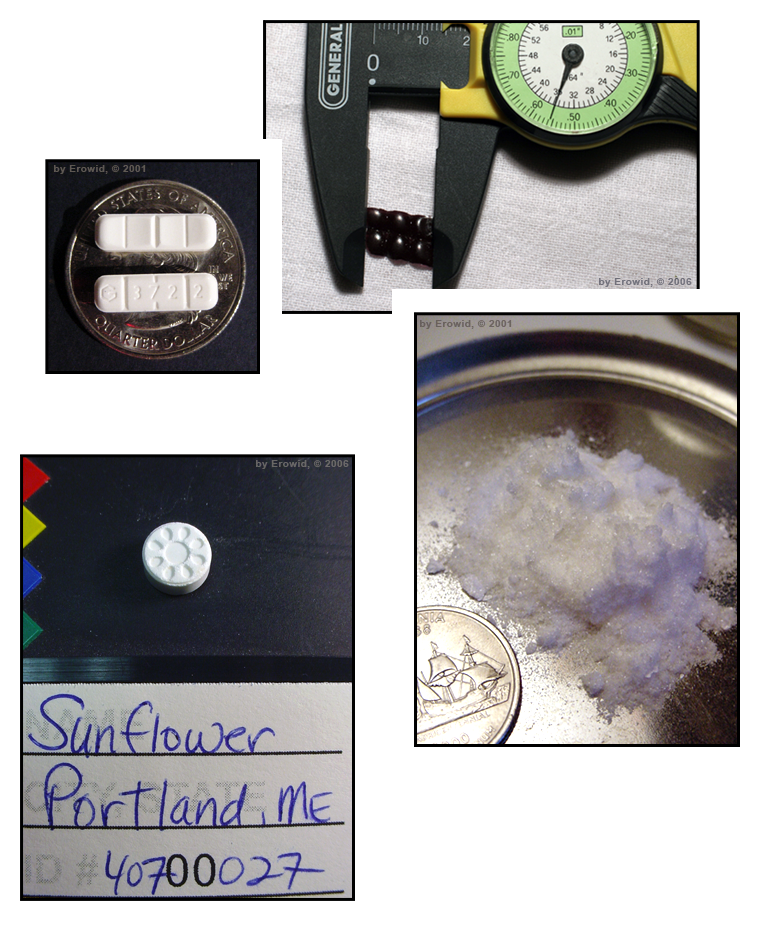Photo Geekery
The Art of Photographing Psychoactives
Nov 2006
Citation: Erowid F. "Photo Geekery: The Art of Photographing Psychoactives". Erowid Extracts. Nov 2006; 11:14-18.
In September 2002, at the Mind States Jamaica conference, we first introduced the concept of "drug geeks"--those individuals who pride themselves on their specialized knowledge of psychoactives. One of the many sub-types of the drug geek is the "photo geek", a person who practices the art of photographing psychoactives. Following is a collection of photos taken by the photo geeks at Erowid.
In 1996, when Earth and I first became interested in mycology, we would take long hikes during the mushroom season to see what fungus were growing in our area. Walking along with David Arora's Mushrooms Demystified in tow, we would carefully watch the forest floor, stopping often to leaf through the pages of the guide to try to put a name to the strange-looking fungus we encountered. I began to call mushroom hunting "hiking with a purpose" since it added a new dimension to my experience of walking through the forest. Granted, hiking probably didn't need an additional purpose--the hills of California are a beautiful place. But for me, learning to identify mushrooms added a new educational dimension to these walks.
A few years later, as I became more interested in photography, taking photos added a similar new purpose to many situations I found myself in, particularly those related to psychoactive plants and chemicals.
These materials are ever present in our world. It's difficult to find a place where there isn't some type of psychoactive nearby, whether it's wild mushrooms, a bottle of anti-depressants, an herb garden, or a baggie of cannabis. Since much of our work revolves around these substances, photographing them is natural to me, but can definitely attract attention. The act of taking out a camera to photograph psychoactive-related objects can spark interesting discussions with new acquaintances about how common psychoactives are, it can put people at ease about those conversations, and it can even send people scurrying to find things to be photographed.
Museums, with their wealth of historical objects, can be a great place to take photos of items like these early 20th century packages of opium (left) and bottle of cocaine pills (right).

Psychoactive photo opportunities abound when traveling. We now plan our travel destinations and itineraries in large part around such opportunities. Seeking out interesting and unique photos can provide an organizing principle or purpose for how to decide where to go and what to do. Relevant historical sites, botanical gardens, and museums are abundant in many cities and countries.
These mushroom-related photos were taken in three different parts of the world; London, England (top); Huautla de Jiménez, Mexico (bottom left); and Negril, Jamaica (bottom right).

Taking photos provides a reason to focus on the details of an object, and the photos themselves can solidify memories that may otherwise be fleeting. This Trichocereus pachanoi flower took four months to develop (June–October) and the flower lasted only six days once it opened. It was the first time the ten-year-old cactus had ever bloomed.

It doesn't take a rare flower to make a good photo. It's easy to forget that there is also beauty and interest in more ordinary objects. Even in everyday situations, psychoactives are often nearby: two pints of beer in a British pub (top left), the dying flower of a common morning glory vine (top right), a dried bud of cannabis (bottom left), or whole and grated nutmeg (bottom right).

Not only can photos provide visual interest for lectures and books, but they can present useful and specific data. Images can communicate size, color, shape, and other identifying features of an object more quickly and clearly than written descriptions. Examples include information about available street Ecstasy tablets (bottom left), the identifying markings of pharmaceutical alprazolam tablets (top left), the size of a one gram pile of mescaline (bottom right), or the measurements of geltab LSD (top right).

Photos can also provide functionality for both academics and professionals. Erowid receives many requests to use images of psychoactives: from teachers and professors for use in class, authors for use in books, the media for use in news stories, and professionals for use in presentations at conferences or industry meetings. We find that for those people who may be hesitant to trust new sources of information about psychoactives, quality images can provide an accessible entry point. They can convey a neutral tone about psychoactives less burdened with suspicion or doubt than other forms of data.
But the best psychoactive images are a mix of information and aesthetics. And the process of documenting artifacts through images is one part photography, one part documentation, and one part meditation. Psychoactive photo geekery requires engaging with the world while also settling in to the slow experience of really seeing the details that make up the informative, mysterious, and beautiful world of psychoactive plants and chemicals.
In 1996, when Earth and I first became interested in mycology, we would take long hikes during the mushroom season to see what fungus were growing in our area. Walking along with David Arora's Mushrooms Demystified in tow, we would carefully watch the forest floor, stopping often to leaf through the pages of the guide to try to put a name to the strange-looking fungus we encountered. I began to call mushroom hunting "hiking with a purpose" since it added a new dimension to my experience of walking through the forest. Granted, hiking probably didn't need an additional purpose--the hills of California are a beautiful place. But for me, learning to identify mushrooms added a new educational dimension to these walks.
A few years later, as I became more interested in photography, taking photos added a similar new purpose to many situations I found myself in, particularly those related to psychoactive plants and chemicals.
These materials are ever present in our world. It's difficult to find a place where there isn't some type of psychoactive nearby, whether it's wild mushrooms, a bottle of anti-depressants, an herb garden, or a baggie of cannabis. Since much of our work revolves around these substances, photographing them is natural to me, but can definitely attract attention. The act of taking out a camera to photograph psychoactive-related objects can spark interesting discussions with new acquaintances about how common psychoactives are, it can put people at ease about those conversations, and it can even send people scurrying to find things to be photographed.
Museums, with their wealth of historical objects, can be a great place to take photos of items like these early 20th century packages of opium (left) and bottle of cocaine pills (right).

Psychoactive photo opportunities abound when traveling. We now plan our travel destinations and itineraries in large part around such opportunities. Seeking out interesting and unique photos can provide an organizing principle or purpose for how to decide where to go and what to do. Relevant historical sites, botanical gardens, and museums are abundant in many cities and countries.
These mushroom-related photos were taken in three different parts of the world; London, England (top); Huautla de Jiménez, Mexico (bottom left); and Negril, Jamaica (bottom right).

Taking photos provides a reason to focus on the details of an object, and the photos themselves can solidify memories that may otherwise be fleeting. This Trichocereus pachanoi flower took four months to develop (June–October) and the flower lasted only six days once it opened. It was the first time the ten-year-old cactus had ever bloomed.

It doesn't take a rare flower to make a good photo. It's easy to forget that there is also beauty and interest in more ordinary objects. Even in everyday situations, psychoactives are often nearby: two pints of beer in a British pub (top left), the dying flower of a common morning glory vine (top right), a dried bud of cannabis (bottom left), or whole and grated nutmeg (bottom right).

Not only can photos provide visual interest for lectures and books, but they can present useful and specific data. Images can communicate size, color, shape, and other identifying features of an object more quickly and clearly than written descriptions. Examples include information about available street Ecstasy tablets (bottom left), the identifying markings of pharmaceutical alprazolam tablets (top left), the size of a one gram pile of mescaline (bottom right), or the measurements of geltab LSD (top right).

Photos can also provide functionality for both academics and professionals. Erowid receives many requests to use images of psychoactives: from teachers and professors for use in class, authors for use in books, the media for use in news stories, and professionals for use in presentations at conferences or industry meetings. We find that for those people who may be hesitant to trust new sources of information about psychoactives, quality images can provide an accessible entry point. They can convey a neutral tone about psychoactives less burdened with suspicion or doubt than other forms of data.
But the best psychoactive images are a mix of information and aesthetics. And the process of documenting artifacts through images is one part photography, one part documentation, and one part meditation. Psychoactive photo geekery requires engaging with the world while also settling in to the slow experience of really seeing the details that make up the informative, mysterious, and beautiful world of psychoactive plants and chemicals.


